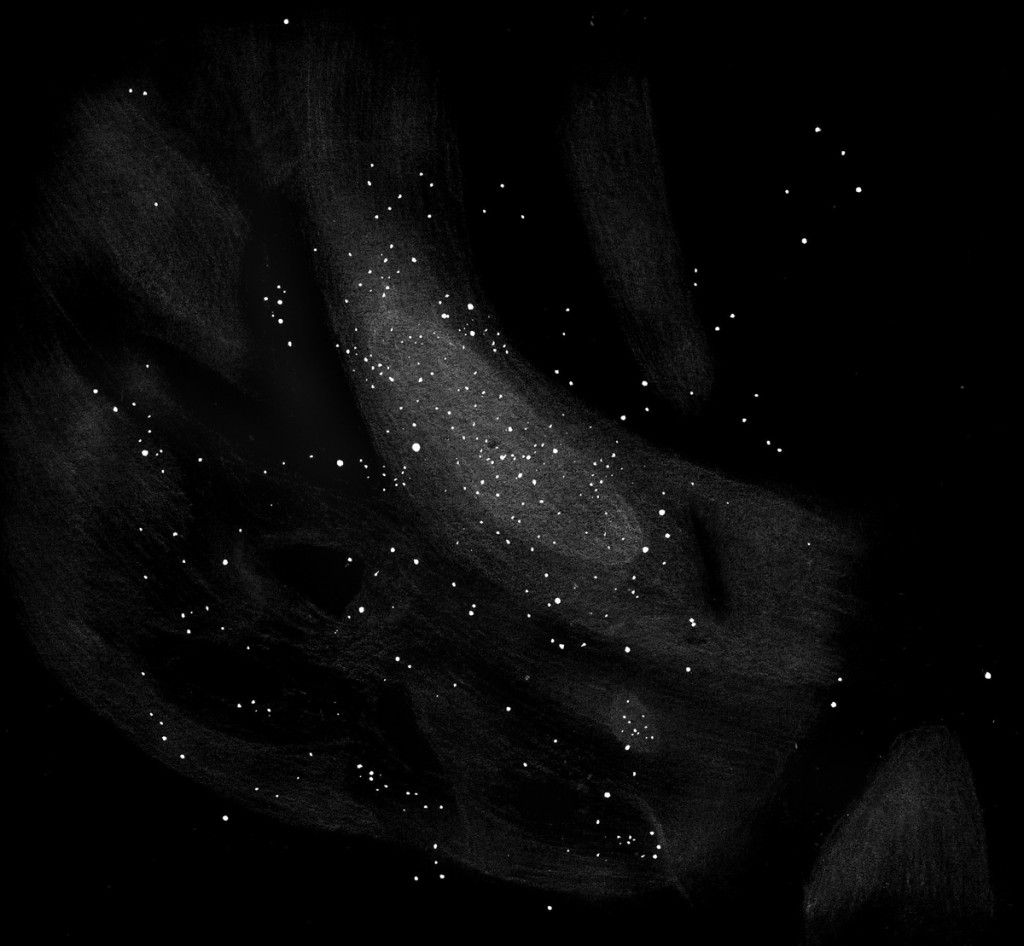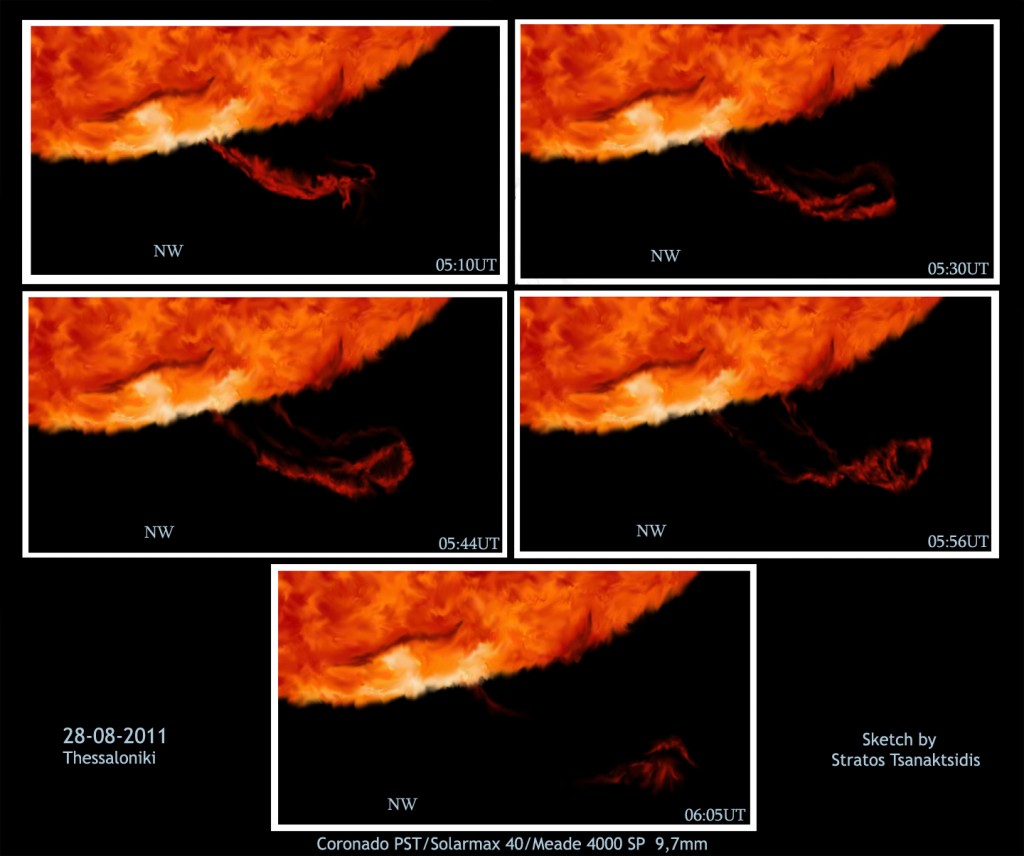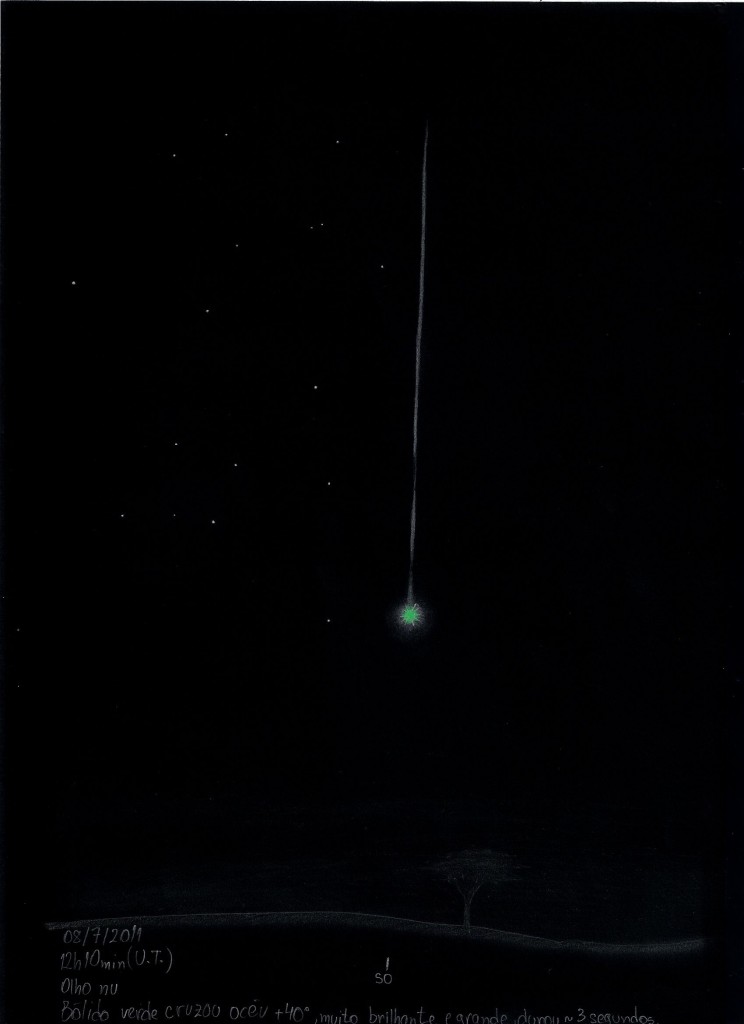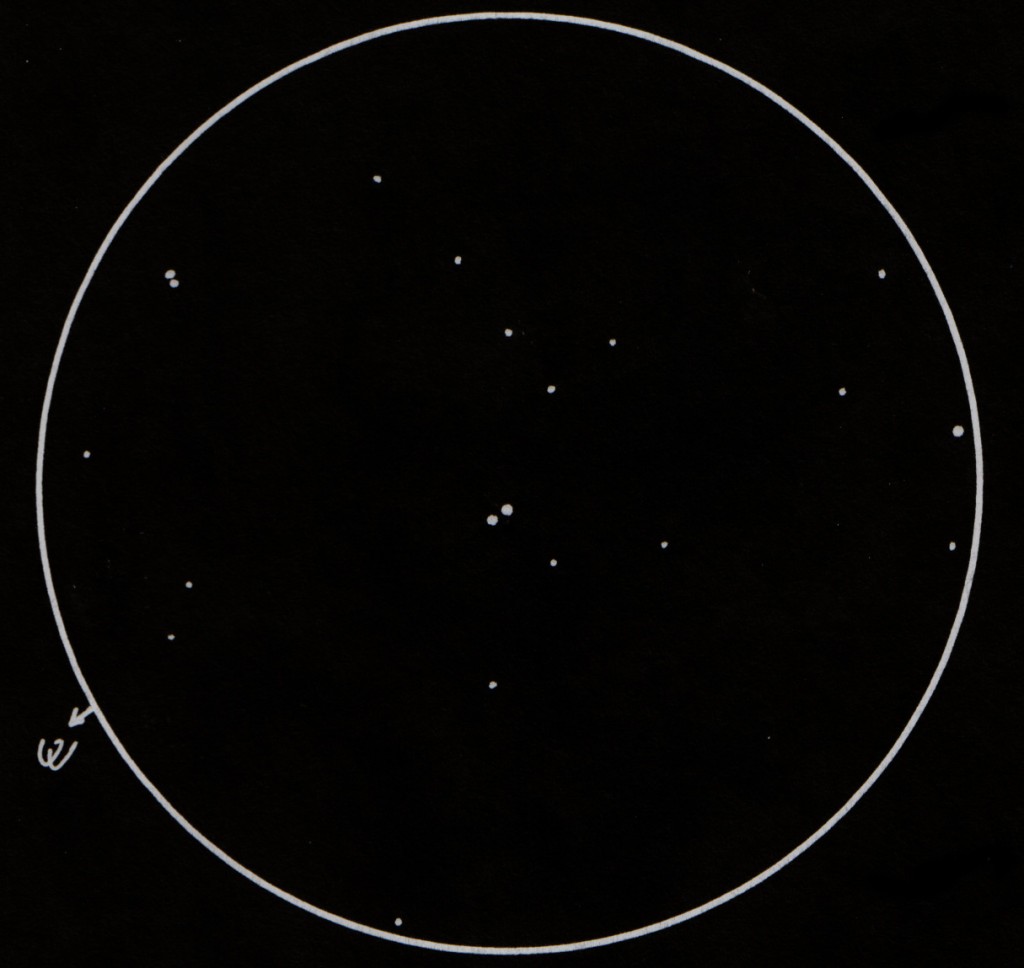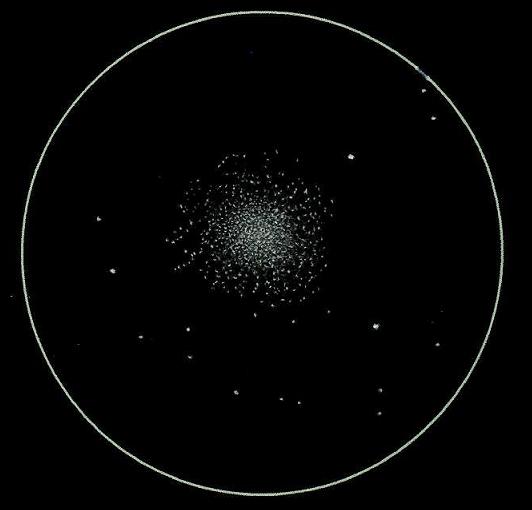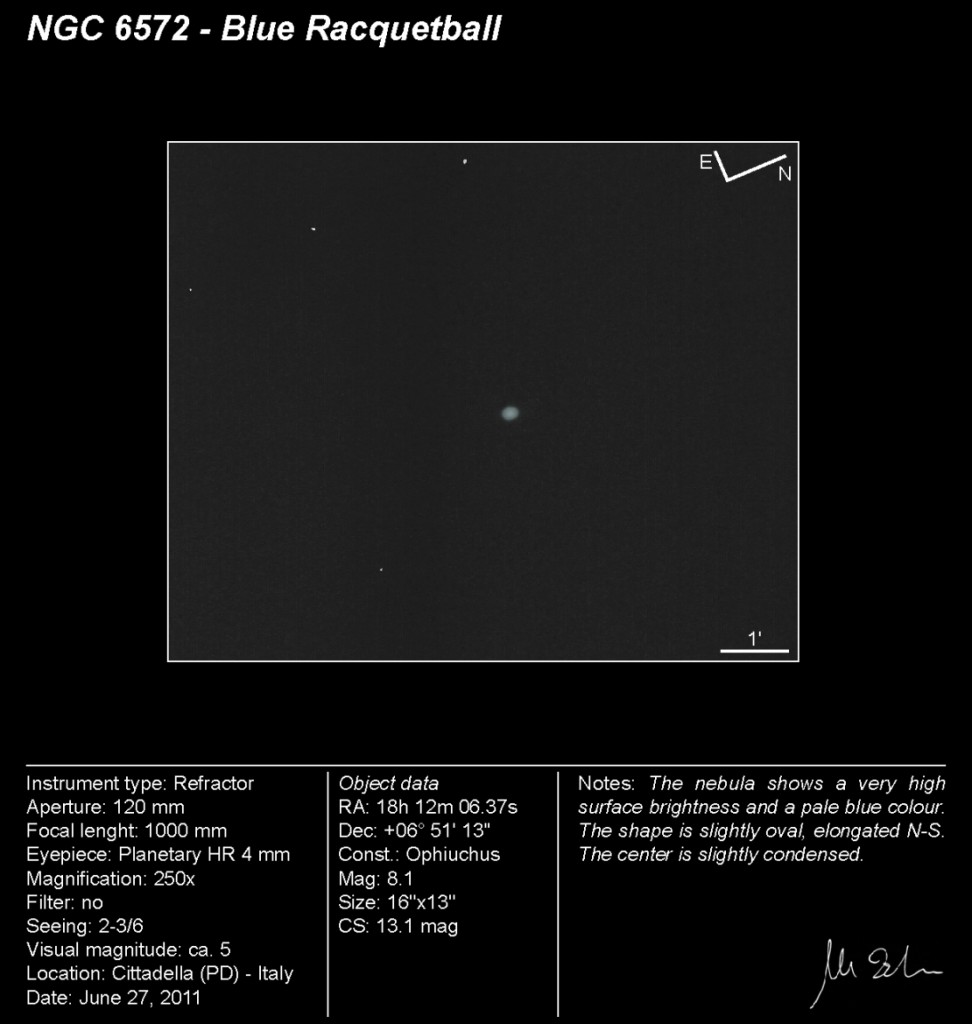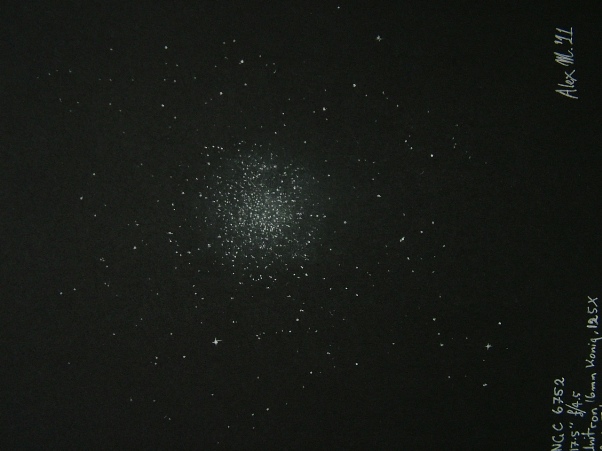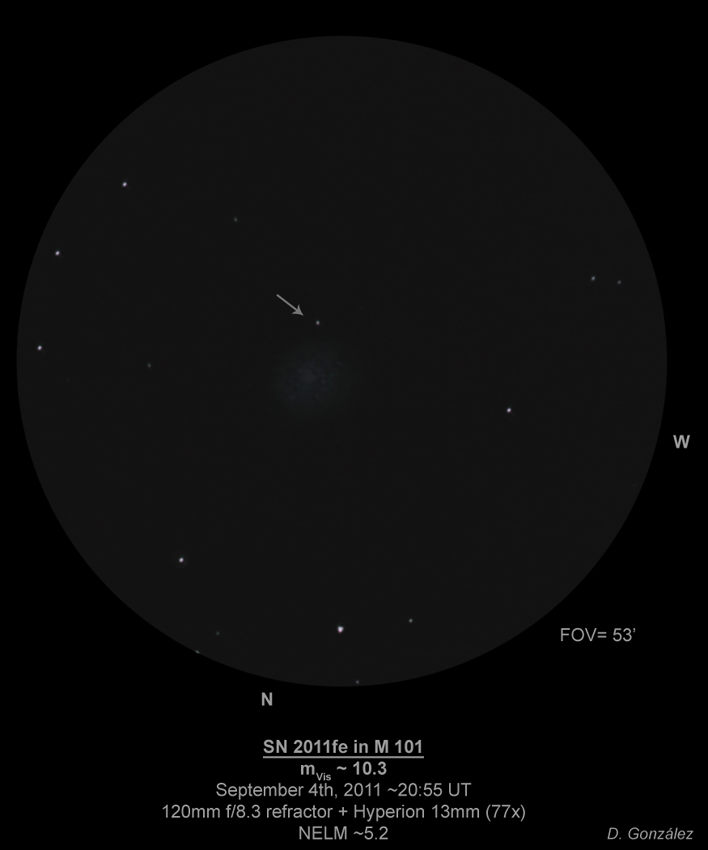
Here is a sketch of the unusually bright supernova that appeared last August 24th in the Pinwheel Galaxy (M 101) in Ursa Major. SN 2011fe is now at its maximum around magnitude 10 and it is very easy to see in my 120mm refractor, but it was also easy with an 80mm refractor (I estimated magnitude 10.3 on Sept. 4th and 10.0 on 6th). In contrast, as I am observing with moderate light pollution and M 101 is low, the galaxy itself is barely visible and I only can see the central region with effort. SN 2011fe is a nearby type Ia supernova and the brightest one since 1987. 2011 is being a great year for supernova observers!
Sketch: 2HB graphite pencil on white paper, scanned and processed with Photoshop CS3
Object Name: Supernova SN 2011fe in M 101
Object Type: Galaxy and supernova
Location: Asturias, Spain
Date: September 4th, 2011
Instrument: 120mm f/8,3 refractor + Hyperion 13mm (77x)
NELM: around 5.2, moderate light pollution
Regards,
Diego González
